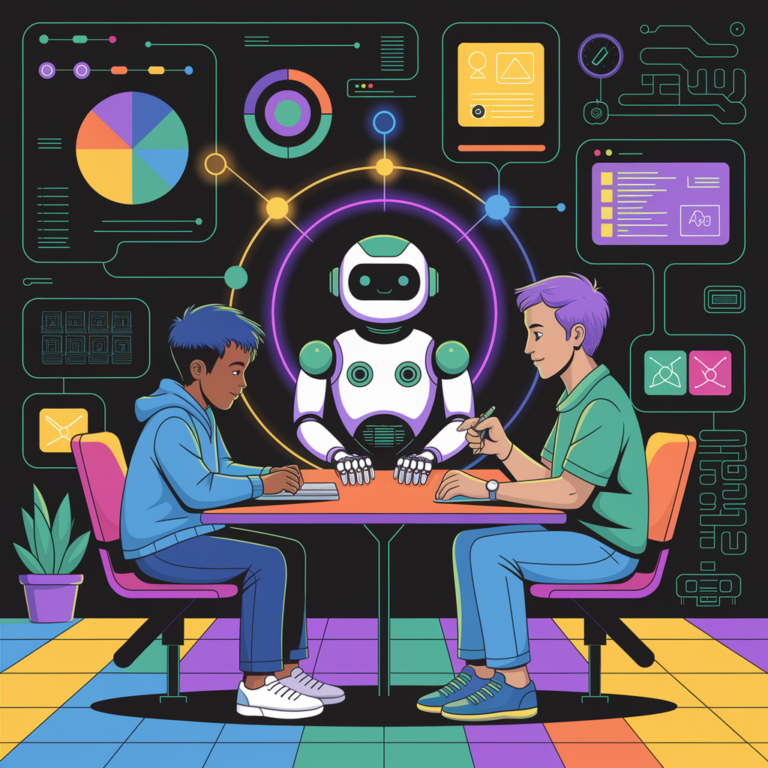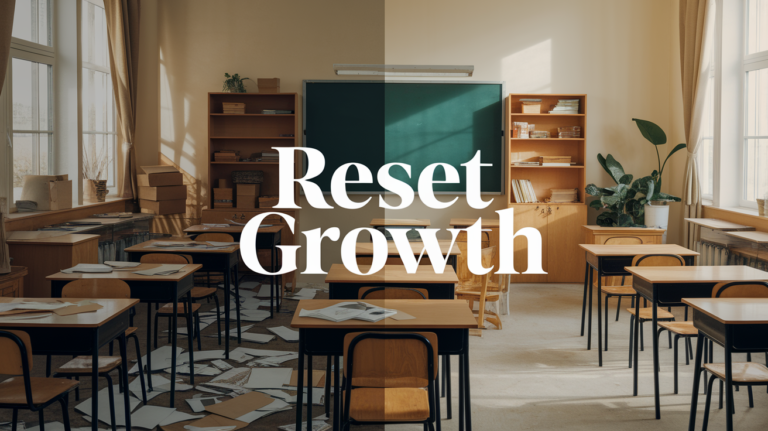The Future of AI in the Classroom – What Educators Need to Know
AI in the classroom isn’t some far-off concept. It’s here, shaping our student’s experiences in ways we’re only just beginning to grasp. From adaptive learning tools to automated feedback, AI is already changing how teachers work and how students learn. The real question isn’t whether AI belongs in education. It’s how we, as educators, can make it work for and with us.
This week on Instagram, I started a series about AI in education. In the series, I’ll be talking about why it’s inevitable, what it means for teachers and students, and how we can prepare. This blog post continues that conversation, diving deeper into AI’s potential, its pitfalls, and what we can do right now to get ahead of the curve.
Why AI in Education Is Inevitable
Let’s be real. AI isn’t going anywhere. Our students are already using it, whether we like it or not. Tech companies are integrating AI into everything including smartphones, laptops, cars, and even refrigerators. It’s no surprise that education is the next frontier.
Look at platforms like Canva, Formative, Quizizz, and Khan Academy—AI is already being embedded in the digital tools we use daily.
- Adaptive learning systems adjust content based on student progress.
- AI tutoring programs provide instant feedback.
- Automated feedback tools take grading off our plates so we can focus on actual teaching.
Beyond that, AI is already shaping careers. Employers rely on AI-driven analytics, automation, and decision-making. If we don’t teach students AI literacy now, they’ll be at a disadvantage in a job market evolving faster than ever. Consider this: 60% of today’s jobs didn’t exist 80 years ago. The next wave of change is coming, and we need to prepare our students for it.
What AI Means for Teachers and Students
Benefits for Teachers

If AI can make one thing easier for educators, it’s workload reduction. With automated feedback, lesson planning, and by analyzing student data, AI can handle the repetitive stuff, freeing us up for what actually matters: engaging with students and teaching.
AI also has the potential to give us better data and show us how to use it more effectively.
In a future post, we’ll talk about using AI to analyze test data to determine how to revise your assessments, spot learning gaps, and determine if and when a curve is really necessary.
Benefits for Students

AI personalizes learning in a way traditional classrooms often can’t. It can adapt lessons to students’ strengths and weaknesses, offering extra practice where needed and pushing advanced learners further.
Instant feedback is another game-changer. Instead of waiting days for a grade, students get real-time insights that help them course-correct while they’re still in the learning process.
Accessibility also improves with AI. Text-to-speech, speech-to-text, language translation, and other assistive technologies are helping to make learning materials more inclusive for all students.
Challenges and Ethical Considerations
Of course, AI isn’t perfect, and if we aren’t aware of its challenges now, we’ll be dealing with bigger issues down the line.
Over-Reliance on AI
AI can make things easier, but too much reliance is a problem. If students turn to AI for every answer, they miss out on essential problem-solving and critical thinking skills. The goal should be AI as a tool, not a crutch.
The same goes for teachers. As we use AI more, the satisfaction that comes from a successful implementation can lead to letting our guard down the next time around. AI is fallible, and if we’re going to employ it, we need to make sure we’re always approaching what it produces with a critical eye.
Data Privacy & Security
AI collects data, a lot of it. Schools need to be proactive in understanding what’s being gathered, how it’s stored, and who has access. Without strong privacy protections, student information could be misused. Carefully vetting software is the first step. Training teachers what is and isn’t appropriate to share is also a significant consideration.
AI Bias & Accuracy Issues
AI isn’t neutral. It reflects the data it’s trained on, which means it can inherit biases. This can lead to AI-generated recommendations or assessments that aren’t fair or accurate. Teachers must stay vigilant. Teachers can’t rest on their laurels and assume everything produced by an AI is completely un-biased.
How Teachers Can Prepare for AI Integration
Start Small & Experiment
The best way to get comfortable with AI? Try it. Spend five minutes with ChatGPT, have it suggest lesson plans, or critique an existing one. See what works and what doesn’t.
Tools like Formative, Brisk, Grammarly, and Gamma.app offer easy entry points into AI as well.
- Formative can create questions based on readings, and it can generate “glow and grow” style feedback.
- Grammarly can make suggestions on writing, and it can help craft text specific for your purpose.
- Brisk will provide feedback based on your rubric, it will review handwritten text, and it will generate lessons and activities based on what you provide it.
- Gamma.app will update your old PowerPoint slides or generate completely new ones. It’ll even throw in AI generated images (some of which appear here) as part of the process.
The key? Transparency. If we’re using AI in our teaching, we should be open with students about how and why we’re doing it.
Teach AI Literacy & Critical Thinking
AI isn’t a replacement for good teaching—it’s a tool to enhance it. Teachers should shift their focus to fostering critical thinking and digital literacy. One way to do this is by designing assignments that encourage students to analyze and fact-check AI-generated content rather than just accepting it at face value.
For example, teachers could have students compare AI-generated essays with human-written ones or use AI-generated summaries as a starting point for deeper discussion and critique. You can see that in action in my recent post about incorporating AI discussions into pre-reading assignments.
What Administrators Should Be Doing
I’m going to keep this section light, because every school (and district) is going to have to figure this out for themselves. The basics though are straightforward.
Establishing AI Policies
Don’t close the door on AI, but do establish clear policies and be ready to revise them as the landscape changes. Parents, Teachers, and students need a clear understanding of what is expected, what’s allowed, and what’s off the table. That needs to come from the top.
Providing Professional Development
Teachers shouldn’t be left to figure out AI on their own. Schools need to provide structured training so educators can use AI effectively without feeling like it’s just another thing to worry about.
Evaluating AI Tools Before Adoption
Not all AI tools are created equal. There is an incredible amount of AI snake-oil out there right now, and it’s incumbent upon educators to be deliberate in vetting everything before it goes into regular use.
When & How to Implement AI Effectively
Take a Gradual Approach
Schools should start small. Automate simple tasks like quiz grading or run pilot programs to test AI-driven study tools before rolling out major initiatives.
Keep Human Oversight in the Loop
AI should never replace human judgment. AI-generated feedback must align with learning goals while maintaining real teacher-student connections.
Conclusion
AI is already reshaping education, and it’s not slowing down. If we use it wisely, AI can lighten workloads, enhance learning, and improve accessibility. But we have to be intentional. AI should support great teaching,not replace it.
By staying curious and adaptable, we can prepare students for a future where AI is just another tool in their learning arsenal.
What’s your experience with AI in the classroom? Let’s keep the conversation going,drop a comment below!



